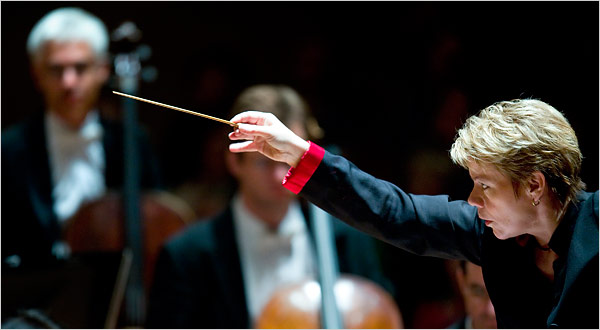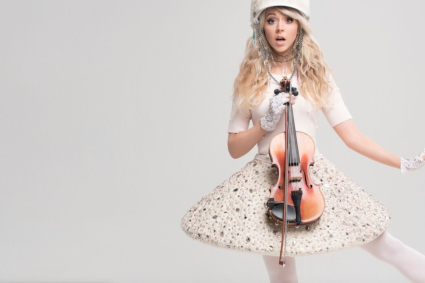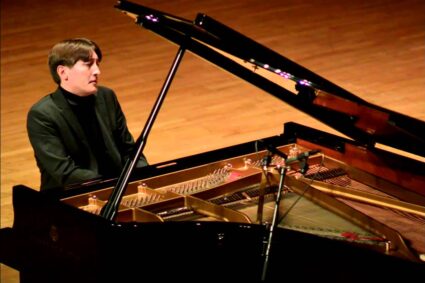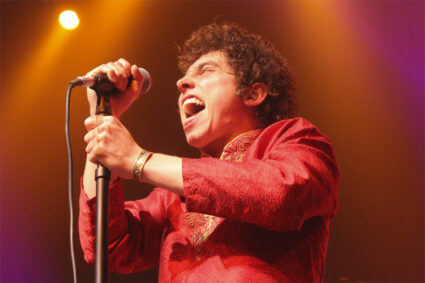
Sunday, January 11th 3p.m. – Marin Alsop leads The Baltimore Symphony Orchestra (BSO) in Stravinsky’s The Rite of Spring at The Music Center at Strathmore. In addition Barber’s Medea’s Meditation and Dance of Vengeance and Osvaldo Golijov’s Rose of the Winds, were also performed. They were joined by internationally acclaimed musicians, Christina Pato, Galician bagpipes, Kayhan Kalhor, kamancheh, David Krakauer, klezmer clarinet and Michael Ward-Bergeman, hyper-accordion.
Maestra Alsop explained the New Year as having an association with primitivism and that Barber’s Medea’s Meditation and Dance of Vengeance sort of protruded that sentiment. Listening to it, the percussion definitely gave off a primal sense. The introductory xylophone added an archaic touch, like bones clanging against each other. The dynamics were subtle at first, soft winds and soft strings. It was remotely dissonant, like listening to an eerie anthology. This number was enjoyable the way it developed. A hostile sounding piano in the finale leads with interjecting winds and strings resembling a dance of vengeance. The piano reminded me of Prokofiev’s Sonata No. 6, just not as technical.
For Osvaldo Golijov’s Rose of the Winds, it required four specialist, Christina Pato, Galician bagpipes, Kayhan Kalhor, kamancheh, David Krakauer, klezmer clarinet and Michael Ward-Bergeman, hyper-accordion. It’s extraordinary just how emotionally gripping this song is. Christina Pato on bagpipes was astounding! It’s indescribable just how powerful she sounds. This was an interesting interpretation, it sounded like a lot of ornamentation was involved like there was an impromptu nature with the way it was performed. Regardless it was still phenomenal! Kayhan Kalhor performed some outstanding solos on a kamancheh, a small instrument resembling a violin. It has a spherical base and he would pivot the instrument while he played. It sounded incredible and the manner in which he plays is memorizing. He graciously swung the kamancheh back and forth emitting a unique sound. Another instrument was the klezmer clarinet. I know the clarinet is an instrument that has gone through numerous technological advances over the centuries. This was a historic form of the clarinet traditionally used for dance. David Krakauer played hora style music synonymous with Israeli dance, it was very expressive. The four guest musicians really collaborated well. What was surprising was Micheal Ward-Bergeman on hyper-accordion. I always viewed the accordion as a prominent lead instrument. He had a solo piece that was performed well but for the most part his playing was submissive. He created atmospheric effects that complimented the other instruments. That’s contrary to the fisarmonica style of accordion that I’m used to. It’s fantastic! The idea of taking an accordion and creating an atmosphere is well conceived. It’s almost like the instrument is breathing life. He has a side project, Groanbox with some interesting material; Icaros is a fantastic nature piece.
Stravinsky’s The Rite of Spring followed in the theme of primitivism. If that was the expression trying to be achieved. I find it more captivating than anything else, if that could be a musical expression. A melodic introduction on winds that develops into a heart-pounding motif. The excitement of the full orchestra playing at once in this score was unparalleled to any other concert experience. I’m getting goose bumps just thinking about it. Stavinsky’s The Rite of Spring was my interest in seeing this concert. I was not disappointed by any means. There were big booming horns that just gave you this energy and power. Marin Alsop conducted vehemently capturing the orchestra and releasing its force. I was enamored.
This was a terrific concert and a great way for Marin Alsop to start the 2015 season. Marin Alsop has a knack for directing interesting programs. So whenever you see her conducting a program, you know it’s going to be a good show. At least one worth looking into.



